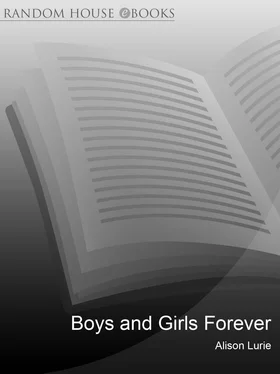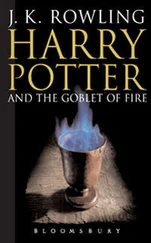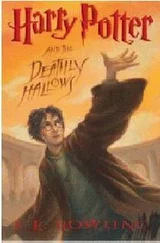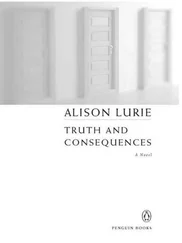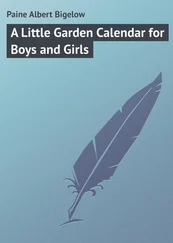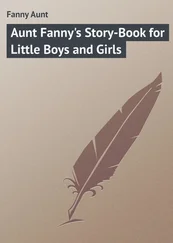“Everything is made out of Magic,” [Colin says] “leaves and trees, flowers and birds, badgers and foxes and squirrels and people. So it must be all around us.” 18
Toward the end of the book the three children participate in what might be called a kind of spiritual communion when they have a natural-food picnic of “roasted eggs and potatoes and richly frothed new milk and oat-cakes and buns and heather honey and clotted cream.” 19
Frances Hodgson Burnett once wrote, “There ought to be a tremendous lot of natural splendid happiness in the life of every human being,” 20and at the end of The Secret Garden she provides all her characters with a splendid if somewhat supernatural happy ending. Through a dream-vision of his dead wife the restored garden summons Colin’s father, who has been wandering all over Europe in a state of hopeless depression for ten years. He returns to Misselthwaite Manor, and finds that the son he had thought of as a whiny, helpless invalid is now strong and full of energy, and in the famous last scene of the book they are reunited. Planting and weeding and watering can not only change a wasteland into a garden—the moral is, it can change your life. For more than twenty years, when I taught children’s literature at Cornell, The Secret Garden was my students’ favorite book, and this was the scene that moved them most.
For Cornell’s most famous literary alumni, E. B. White, nature was also magical. His best-known book, Charlotte’s Web , celebrates life on a New England farm that was based on his own farm in North Brooklin, Maine. The story is a kind of modern pastoral; it takes place over the course of a year, and is founded on close practical experience and observation. It tells how a little girl named Fern and a spider named Charlotte together preserve the life of a pig called Wilbur. They do it with words, in something of the same way that E. B. White, in his book, preserves a year in the life of a small New England farm in mid-twentieth-century America. The book has a happy ending for Wilbur, but it is also a kind of natural tragedy, since Charlotte, being a spider, has to die at the end of the summer. On a farm, White tells us, life and death are cyclical; but death always gives way to life, just as winter gives way to spring in this famous passage at the end of the book:
“I heard the frogs today,” said the old sheep one evening. “Listen! You can hear them now.”
Wilbur stood still and cocked his ears. From the pond, in shrill chorus, came the voices of hundreds of little frogs.
“Springtime,” said the old sheep, thoughtfully. “Another spring.” As she walked away, Wilbur saw a new lamb following her. It was only a few hours old.
The snows melted and ran away. The streams and ditches bubbled and chattered with rushing water. A sparrow with a streaky breast arrived and sang. The light strengthened, the mornings came sooner. Almost every morning there was another new lamb in the sheepfold. The goose was sitting on nine eggs. The sky seemed wider and a warm wind blew. The last remaining strands of Charlotte’s old web floated away and vanished. 21
When children read books like these, they are beginning to learn, or somehow already know, what their authors are trying to tell us: that nature is magical and that it can also be life-changing.
TODAY, many people have the illusion that they know who Pinocchio is. They think that he is a wooden marionette who becomes a human boy; that he was swallowed by a huge fish; and that when he told lies his nose grew longer. (As a result of this last incident, for over a hundred years politicians have been caricatured with a lengthened nose when they prevaricate in public.)
These people are right, but only in a very limited way. They know Pinocchio only from the sentimentalized and simplified Disney cartoon, or the condensed versions of his story that are thought more suitable for children. The original novel by Carlo Collodi, which today survives mainly in scholarly editions, is much longer, far more complex and interesting, and also much darker. The critic Glauco Cambon has called it one of the three most influential works in Italian literature (the others, he claims, are Dante’s Divine Comedy and Manzoni’s The Betrothed ). For him, and those who know the real version, The Adventures of Pinocchio is not an amusing, light-hearted fantasy, but a serious fable about art and life. It is a story about growing up—and it is also, in essential ways, a story about growing up poor and Italian.
Carlo Collodi, whose real name was Carlo Lorenzi, was born in Florence in 1826, the first of ten children of household servants. When he did well in the local school, his parents’ employer paid for his further education in the hope that he would become a priest. This did not happen. Instead, after graduation Lorenzi went to work for a bookseller, and eventually became a liberal journalist, skeptical of both education and the church. In Pinocchio school is something that all boys dread, and religion is hardly mentioned.
Originally, Pinocchio was published as a serial in the newspaper Il Giornale per I bambini (‘The paper for children’). It appeared in eight parts between July and October of 1881, and then in eleven more installments from February 1882 to January 1883. The form of the story was that of a picaresque novel, in which, perhaps because of the pressures of time, some of the chapters are more original and better integrated into the story. Some of these episodes—for example those in which Pinocchio meets a giant serpent, is caught in a trap and made to serve as a watchdog, rides on the back of a pigeon, and is mistaken for a fish by a monstrous green-haired fisherman—are often left out of the condensed English-language versions.
The Disney film omits even more of the story, and changes it drastically. Gepetto, Pinocchio’s foster-father, appears to be a prosperous toymaker, and the town where he lives looks Swiss or Bavarian: his workshop is full of music boxes and cuckoo clocks. In the original story, however, Gepetto, is a desperately poor Italian woodcarver. When the film begins, Pinocchio is a lifeless wooden toy; he comes to life only when a fairy grants Gepetto’s wish for a child. In the book Pinocchio is alive from the start. Though he is only a nameless stick of firewood in the shop of the carpenter Master Anthony, he can already speak and move. When Master Anthony strikes the stick with his axe, it cries out ‘Ouch! You hurt me!’ The carpenter is terrified, and offers the piece of wood to his friend Gepetto, who wants to make a marionette. It continues to act up, mocking Gepetto, and striking Master Anthony, provoking two fistfights between the old friends.
When Gepetto gets home he begins to carve the marionette. But as soon as Pinocchio’s mouth is finished he laughs at Gepetto and sticks out his tongue, and once he has arms he snatches Gepetto’s wig off his head. When his legs and feet are finished, he runs away.
From the start, Collodi’s Pinocchio is not only more self-conscious but far less simple than the cute little toy boy of the cartoon. He is not only naïve, but impulsive, rude, selfish, and violent. In theological terms, he begins life in a state of original sin; while from a psychologist’s point of view, he represents the amoral, self-centered small child, all uncensored id.
Unable to control his own impulses, Pinocchio provokes external control. As he runs down the street, pursued by Gepetto, he is stopped by a policeman who returns him to his foster father. Immediately, in a maneuver that will be familiar to many parents of small children, Pinocchio flings himself on the ground and declares that he won’t walk anymore. A crowd gathers and (like some modern experts on child development) begins to blame Gepetto for Pinocchio’s delinquency. Eventually they convince the policeman to put Gepetto in prison. In Collodi’s world, the law is always stupid and often corrupt. It is usually the victim of a crime, rather than the perpetrator, who is punished. (Later in the story, when Pinocchio goes to court to complain that he has been robbed, the judge, who is a gorilla, sends him rather than the robbers to jail. He is released only when he falsely admits that he is a criminal.)
Читать дальше
